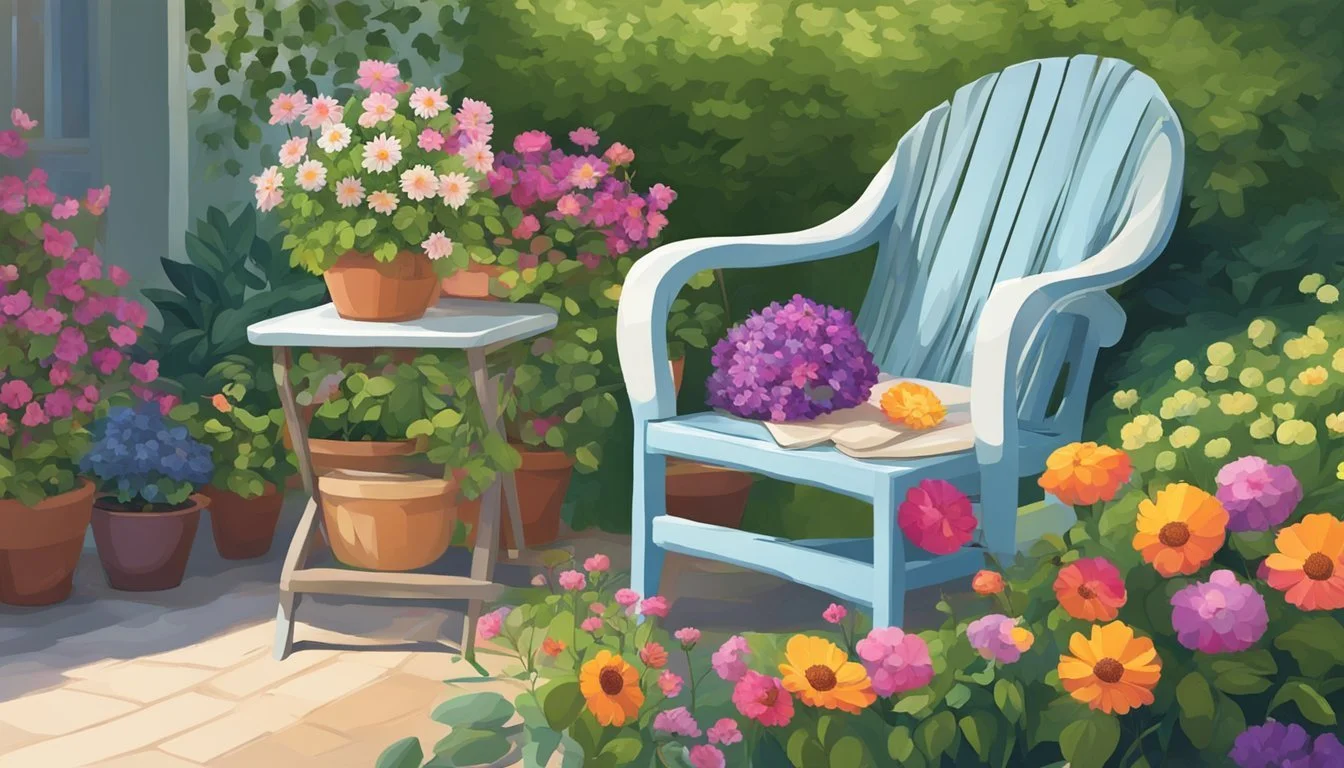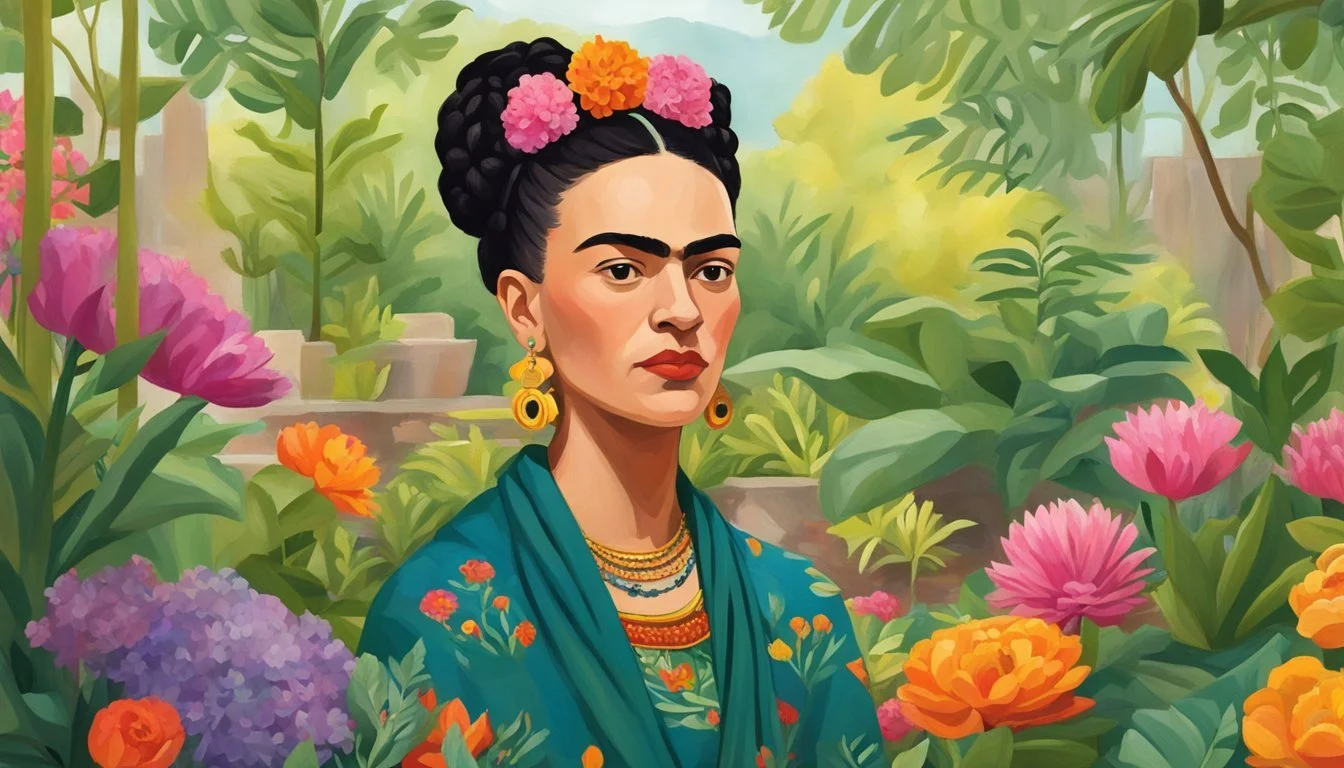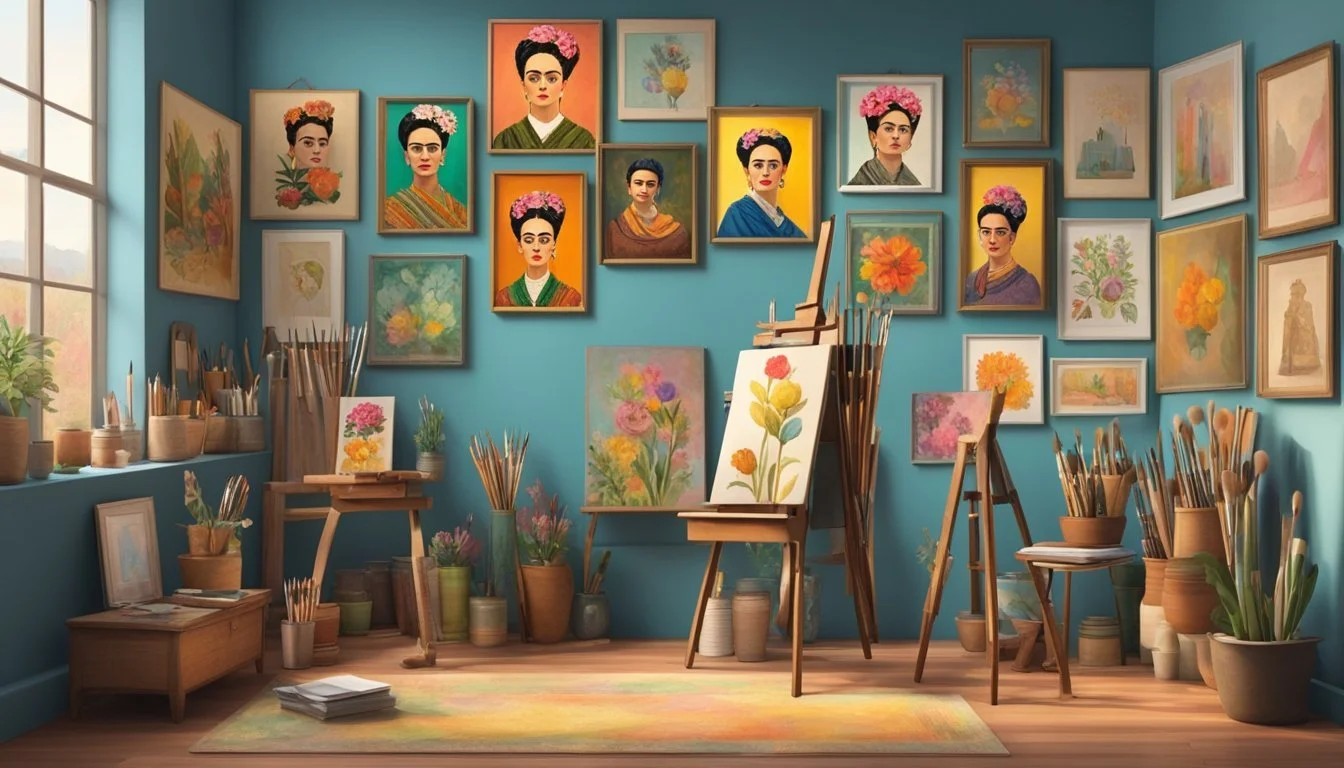Frida Kahlo: The Woman Behind the Iconic Paintings
A Deep Dive into the Artist's Life and Legacy
Frida Kahlo's vibrant self-portraits and surrealist paintings have captivated audiences worldwide for decades. Born in 1907 in Mexico City, Kahlo's life was marked by physical and emotional pain, which became central themes in her artwork. A near-fatal bus accident at age 18 left her with lifelong injuries, influencing her artistic expression and personal struggles.
Kahlo's paintings offer a window into her inner world, exploring themes of identity, gender, class, and Mexican culture. Her bold use of color, symbolism, and unflinching depictions of the human body set her apart from her contemporaries. Despite facing numerous challenges, including a tumultuous marriage to fellow artist Diego Rivera, Kahlo channeled her experiences into powerful visual narratives.
Today, Frida Kahlo is recognized as one of the most significant artists of the 20th century. Her distinctive unibrow, traditional Mexican attire, and penetrating gaze have become iconic symbols of strength and resilience. Beyond her artistic legacy, Kahlo's life story continues to inspire discussions on feminism, disability, and cultural identity in the modern world.
The Early Life of Frida Kahlo
Frida Kahlo's early years were marked by significant events that shaped her identity and artistic vision. Born in Mexico to parents of mixed heritage, she faced physical challenges from a young age that profoundly influenced her life and work.
Childhood and Family Background
Magdalena Carmen Frida Kahlo y Calderón was born on July 6, 1907, in Coyoacán, Mexico. Her father, Wilhelm Kahlo, was a German immigrant photographer, while her mother, Matilde Calderón y González, was of Mexican descent. This diverse cultural background played a crucial role in shaping Frida's worldview.
Frida grew up in the family home known as La Casa Azul (The Blue House), which later became a museum dedicated to her life and work. She was the third of four daughters and enjoyed a close relationship with her father, who encouraged her intellectual pursuits.
Polio and the Bus Accident
At age six, Frida contracted polio, which left her right leg thinner and shorter than her left. This early experience with physical disability would later influence her artistic themes.
In 1925, at age 18, Frida faced another life-altering event. She was involved in a severe bus accident when the vehicle collided with a streetcar. The crash left her with numerous injuries, including:
A broken spinal column
A broken collarbone
Broken ribs
A shattered pelvis
Eleven fractures in her right leg
These injuries caused Frida chronic pain throughout her life and required multiple surgeries. The accident became a pivotal moment in her artistic journey, as she began painting during her recovery.
Education at National Preparatory School
Before the accident, Frida attended the National Preparatory School in Mexico City, one of the country's most prestigious educational institutions. She was one of only 35 female students in a school of 2,000.
At the Preparatory School, Frida excelled academically and showed a keen interest in natural sciences, particularly biology. She also became involved in political activism, joining a group of young intellectuals known as the "Cachuchas."
During this time, Frida met Diego Rivera, who was painting a mural at the school. This encounter would later lead to their tumultuous relationship and marriage.
Artistic Beginnings and Influences
Frida Kahlo's artistic journey began unexpectedly and drew from diverse sources. Her unique style blended realism, surrealism, and Mexican folk art traditions to create deeply personal and symbolic works.
From Medicine to Art
Kahlo initially pursued a career in medicine at the National Preparatory School in Mexico City. A devastating bus accident in 1925 left her with lifelong injuries and redirected her path towards art. During her long recovery, Kahlo began painting to cope with pain and boredom. Her father, a photographer, encouraged her artistic pursuits and provided her with art supplies and a specially-designed easel.
Kahlo's early works focused on self-portraits and still lifes. She developed her skill through self-study and experimentation, never receiving formal art training. This unconventional start allowed Kahlo to develop a highly personal and distinctive style.
The Intersection of Realism and Surrealism
Kahlo's paintings combined elements of realism and surrealism. She depicted herself and her subjects with precise, realistic details while incorporating dreamlike and symbolic imagery. This unique blend allowed her to explore complex emotional and psychological themes.
Her work often featured vivid colors, stark contrasts, and intricate details. Kahlo used symbolism extensively, drawing from Mexican folklore, nature, and her own experiences. Animals, plants, and objects in her paintings carried deeper meanings related to life, death, and identity.
While Kahlo rejected the label of surrealist, her work shared similarities with the movement's exploration of the subconscious mind.
Inspirations from Mexican Folk Art and Culture
Mexican folk art and indigenous culture profoundly influenced Kahlo's artistic style. She collected traditional crafts and incorporated their aesthetics into her paintings. Bright colors, flattened forms, and decorative patterns reminiscent of Mexican textiles and pottery appeared frequently in her work.
Kahlo often wore traditional Mexican clothing and included these vibrant costumes in her self-portraits. This choice reflected her strong connection to her cultural heritage and her desire to celebrate Mexican identity in her art.
Pre-Columbian art also inspired Kahlo. She incorporated Aztec and Mayan imagery and symbols into her paintings, connecting her modern experiences with ancient Mexican traditions.
Frida and Diego: A Turbulent Relationship
Frida Kahlo and Diego Rivera's relationship was marked by passion, artistic collaboration, and tumultuous conflicts. Their union profoundly impacted their individual artistic careers and left an indelible mark on the art world.
Marriage to Diego Rivera
Frida Kahlo married Diego Rivera in 1929, despite their 20-year age difference. Rivera, already an established muralist, became a significant influence on Kahlo's artistic development.
Their marriage was unconventional from the start. Both artists maintained separate living spaces and studios, allowing for individual creative freedom.
Kahlo's painting "Frida and Diego Rivera" (1931) portrays their complex dynamic. The couple appears side by side, with Rivera holding a palette and brushes, symbolizing his dominant artistic status.
Divorce and Reconciliation
Infidelities plagued their marriage, leading to their divorce in 1939. Rivera's affair with Kahlo's younger sister Cristina particularly devastated Frida.
During their separation, Kahlo created "The Two Fridas" (1939), a powerful self-portrait depicting her emotional state. The painting shows two versions of Frida, one in traditional Mexican attire and the other in European dress.
They remarried in 1940, but their relationship remained volatile. Despite the turmoil, they continued to support each other's artistic endeavors until Kahlo's death in 1954.
Collaborative Works and Influence
Kahlo and Rivera often worked side by side on murals, with Kahlo assisting Rivera on several projects. This collaboration exposed Kahlo to large-scale public art and influenced her style.
Rivera encouraged Kahlo to embrace her Mexican heritage in her work. This influence is evident in her use of vibrant colors and incorporation of indigenous Mexican symbols and themes.
Kahlo's portraits of Rivera showcase her admiration for his artistic prowess. Similarly, Rivera painted Kahlo into several of his murals, immortalizing her image alongside historical figures.
Their mutual inspiration and critique shaped their respective artistic visions, contributing to their enduring legacy in the art world.
Physical and Emotional Struggles
Frida Kahlo's life was marked by intense physical pain and emotional turmoil. These experiences profoundly influenced her art and personal identity.
Health Challenges and Physical Pain
At age 6, Kahlo contracted polio, leaving her right leg thinner and weaker. This early health challenge foreshadowed greater struggles to come. In 1925, a bus accident caused severe injuries, including a fractured spine and pelvis.
Kahlo endured over 30 surgeries throughout her life. She often wore plaster corsets to support her back. Her painting "The Broken Column" (1944) depicts her naked torso split open, revealing a crumbling column in place of her spine.
Chronic pain became a constant companion. Kahlo turned to art as a means of expression during long periods of bed rest. Her self-portraits often featured her physical suffering, making it a central theme in her work.
Dealing with Miscarriages
Kahlo desperately wanted children but experienced multiple miscarriages due to her injuries. These losses deeply affected her emotional state and artistic output.
Her 1932 painting "Henry Ford Hospital" vividly portrays her anguish after a miscarriage in Detroit. The work shows Kahlo lying naked on a hospital bed, surrounded by symbolic objects connected to her by red ribbons resembling umbilical cords.
This traumatic experience intensified Kahlo's exploration of fertility, motherhood, and loss in her art. She often incorporated imagery of fetuses, wombs, and medical instruments in her paintings.
Art as a Reflection of Suffering
Kahlo's artwork became a powerful outlet for expressing both physical and emotional pain. Her self-portraits often featured stoic facial expressions contrasted with vivid depictions of inner turmoil.
In "The Two Fridas" (1939), she portrays her divided self following her divorce from Diego Rivera. One Frida wears traditional Mexican attire with an intact heart, while the other dons European clothing with a broken heart.
Kahlo's use of symbolism and surrealism allowed her to convey complex emotions. Animals, plants, and anatomical elements often represented different aspects of her suffering. Through her art, Kahlo transformed personal anguish into universal expressions of human resilience.
Frida Kahlo's Distinctive Art Style
Frida Kahlo developed a unique artistic style that blended personal experiences with Mexican cultural elements. Her work featured vivid colors, intense symbolism, and deeply personal subject matter.
Self-Portraits and Identity
Kahlo's self-portraits formed the core of her artistic legacy. She painted herself repeatedly, exploring themes of identity, pain, and resilience. These works often depicted her physical and emotional struggles.
Kahlo's facial features were consistently rendered with striking detail. She emphasized her distinctive unibrow and subtle mustache, embracing an androgynous appearance that challenged conventional beauty standards.
Her self-portraits frequently included symbolic elements. Animals, plants, and cultural artifacts surrounded her image, adding layers of meaning to each piece.
Symbolism in Frida's Paintings
Kahlo's art was rich with symbolism drawn from Mexican folklore, nature, and her personal life. She used these elements to convey complex emotions and experiences.
The thorn necklace appeared in several works, representing physical and emotional pain. Hummingbirds often symbolized hope or freedom in her paintings.
Blood, hearts, and anatomical imagery were common motifs. These visceral symbols reflected Kahlo's experiences with chronic pain and medical procedures.
Kahlo also incorporated pre-Columbian imagery and Mexican folk art elements. These choices reflected her deep connection to her cultural heritage.
Use of Traditional Tehuana Dress
Kahlo frequently depicted herself wearing traditional Tehuana dresses from the Oaxaca region of Mexico. This choice of attire held both personal and cultural significance.
The colorful, flowing garments became a signature element of Kahlo's visual identity. They represented her embrace of Mexican indigenous culture and her rejection of European fashion norms.
In her paintings, the Tehuana dress often took on a life of its own. Kahlo manipulated its form and color to convey mood or emphasize certain aspects of her compositions.
The dress also served as a form of armor, concealing Kahlo's physical disabilities while asserting her strength and cultural pride.
Cultural and Political Engagement
Frida Kahlo's art intertwined deeply with her political and social views. Her paintings reflected her identity as a Mexican woman and her commitment to various causes.
Feminist and Activism Themes
Kahlo's work challenged traditional gender roles and beauty standards. She portrayed women's experiences, including childbirth and miscarriage, in raw, unflinching detail. Her self-portraits often featured her distinctive unibrow and facial hair, rejecting societal pressure to conform to typical feminine ideals.
Kahlo's paintings like "My Dress Hangs There" critiqued capitalism and American materialism. She used symbols of industrialization juxtaposed with traditional Mexican imagery to highlight cultural clashes.
Her art also explored themes of physical and emotional pain, drawing from her own experiences with chronic illness and injury.
Role in Mexican Communist Party
Kahlo joined the Mexican Communist Party in 1927. She believed in the party's ideals of workers' rights and anti-imperialism. Her painting "Marxism Will Give Health to the Sick" directly references her political beliefs.
She hosted political meetings at her home, Casa Azul. The house became a gathering place for left-wing intellectuals and artists.
Kahlo's relationship with Leon Trotsky, the exiled Russian revolutionary, further solidified her communist connections. She painted a portrait dedicated to him in 1937.
Influence of European and American Politics
Kahlo's time in the United States and Europe shaped her political views. Living in New York and Detroit exposed her to American capitalism, which she often criticized in her work.
In Paris, Kahlo connected with surrealist artists. While she rejected the surrealist label, the movement influenced her artistic style.
Her painting "Self-Portrait on the Border Line Between Mexico and the United States" contrasts industrial America with pre-Columbian Mexico, highlighting her complex relationship with both cultures.
Kahlo's art consistently advocated for indigenous Mexican culture and critiqued Western influence. She often wore traditional Tehuana dresses as a statement of cultural pride.
Travels and International Recognition
Frida Kahlo's artistic journey took her beyond Mexico's borders, gaining her worldwide acclaim. Her unique style and powerful self-portraits captivated audiences across continents.
Exhibitions from Mexico City to Paris
Kahlo's first solo exhibition took place in Mexico City in 1953. Despite her declining health, she attended the opening on a stretcher. The show's success paved the way for international recognition.
In 1939, Kahlo's work was featured in a Surrealist exhibition in Paris. Her painting "The Frame" became the first work by a 20th-century Mexican artist acquired by the Louvre. This milestone cemented her status in the European art world.
André Breton, the founder of Surrealism, championed Kahlo's work. He described her art as "a ribbon around a bomb" due to its explosive emotional impact.
The Impact of Her Work in America
Kahlo's time in the United States significantly influenced her career. In 1938, she had her first New York exhibition at the Julien Levy Gallery. The show was a critical and commercial success.
During her stay in Detroit with Diego Rivera, Kahlo created some of her most powerful works. "Henry Ford Hospital" and "Self-Portrait on the Borderline Between Mexico and the United States" reflected her experiences in America.
Her "Self-Portrait with Thorn Necklace and Hummingbird" gained particular attention in the U.S. The painting's striking imagery and symbolism resonated with American audiences.
Collaborations with Renowned Artists
Kahlo's artistic circle included some of the most influential figures of her time. In Mexico, she worked closely with her husband, muralist Diego Rivera. Their tumultuous relationship often inspired her paintings.
In Paris, Kahlo forged connections with Surrealist artists. She befriended Marcel Duchamp, who later organized her exhibition at the Renou et Colle Gallery in 1939.
Kahlo's friendship with American painter Georgia O'Keeffe led to collaborative projects and mutual inspiration. Their shared interest in nature and feminine themes is evident in their respective works.
Legacy and Memorialization
Frida Kahlo's impact extends far beyond her lifetime. Her art and life story continue to inspire and resonate with people worldwide, shaping her enduring legacy.
The Frida Kahlo Museum at La Casa Azul
The Frida Kahlo Museum, located in Coyoacán, Mexico City, preserves the artist's former home and studio. Known as La Casa Azul (The Blue House), it opened to the public in 1958, four years after Kahlo's death.
The museum houses a significant collection of Kahlo's personal belongings, artworks, and memorabilia. Visitors can explore her living spaces, kitchen, and studio, gaining insight into her daily life and creative process.
La Casa Azul attracts thousands of visitors annually, serving as a pilgrimage site for Kahlo enthusiasts and art lovers alike.
Presence in Popular Culture and The Arts
Frida Kahlo's distinctive image and artistic style have permeated popular culture. Her self-portraits and unique fashion sense inspire countless adaptations in various media.
Films, books, and theatrical productions continue to explore Kahlo's life and work. Notable examples include:
The 2002 biopic "Frida" starring Salma Hayek
Several documentaries examining her art and influence
Numerous books, both fiction and non-fiction, focused on her life story
Kahlo's image appears on merchandise, from t-shirts to tote bags, cementing her status as a cultural icon.
Posthumous Exhibitions and Recognitions
Kahlo's reputation has grown significantly since her death. Major museums worldwide have hosted retrospectives of her work, introducing new generations to her art.
Notable exhibitions include:
2007: "Frida Kahlo" at the Walker Art Center, Minneapolis
2018: "Frida Kahlo: Making Her Self Up" at the Victoria and Albert Museum, London
2021: "Frida Kahlo: Timeless" at the Cleve Carney Museum of Art, Illinois
In 2001, Kahlo became the first Hispanic woman featured on a U.S. postage stamp. Her painting "The Frame" entered the Louvre's collection in 1939, making her the first 20th-century Mexican artist represented there.
Kahlo's work continues to inspire feminist discourse and appreciation for Mexican heritage in art circles and beyond.




